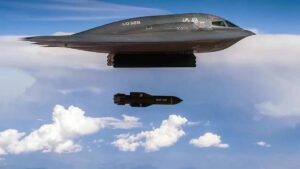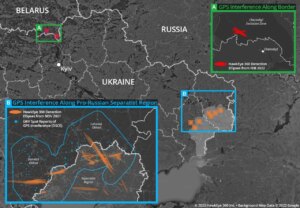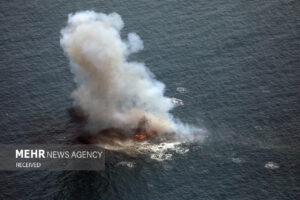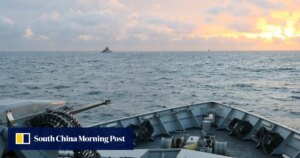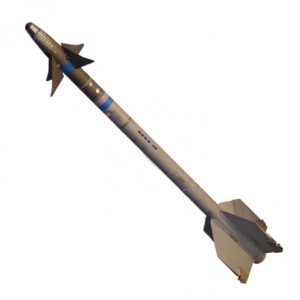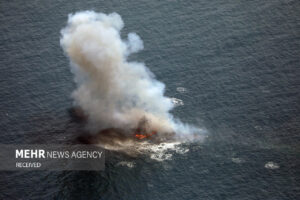中国沿海实弹演习,ZTD-05两栖坦克模拟登陆作战
快速阅读: 2025年7月13日,中国解放军海军陆战队进行训练,展示了ZTD-05两栖突击车的高速渡海和火力支援能力,旨在提升岛屿争夺战的快速反应与持续作战能力,强化联合登陆作战实力。
Central to this exercise was the
ZTD-05
amphibious assault tank, also known in its export configuration as the VN-16. Developed by NORINCO as part of the Type-05 family, this vehicle is purpose-built for high-speed, over-the-horizon amphibious assaults. Armed with a fully stabilized 105 mm rifled gun capable of firing APFSDS, HE, and HEAT rounds, as well as laser-guided missiles while afloat, it delivers significant firepower in both land and maritime environments. Its secondary weapons, a 7.62 mm coaxial machine gun, a 12.7 mm anti-aircraft machine gun, and turret-mounted smoke grenade launchers, provide versatility against a range of threats.
The hull of ZTD-05, made from welded steel and reinforced with composite armor, offers protection against small arms fire and shell fragments, while rear turret racks enhance survivability against HEAT munitions. Thanks to its water-jet propulsion system, the ZTD-05 can reach up to 45 km/h at sea and 65 km/h on land, with an operational range of 500 km. Its advanced fire-control system, thermal imaging, GPS navigation, and NBC protection enable it to maintain combat effectiveness under demanding conditions.
The ZTD-05 was conceived in the early 2000s under Project 212 as a replacement for the slower, less capable Type-63A. The aim was to create an amphibious platform that could match or exceed the performance of Western designs such as the U.S. Expeditionary Fighting Vehicle, which was ultimately cancelled. First publicly unveiled in 2009, the ZTD-05 has since been integrated into the PLA Navy Marine Corps and specialized amphibious brigades, with an export version offered to select foreign operators. Compared to the Type-63A and other legacy designs, the ZTD-05’s combination of speed, firepower, and integrated combat systems gives it a clear tactical advantage, particularly in contested littoral zones where rapid deployment and immediate fire support are critical.
The strategic implications of this training are far-reaching. The PLA’s ability to deploy armored forces from the sea, rapidly reach hostile shores, and deliver sustained fire support reflects a doctrine tailored to potential island seizure operations. The coordinated use of smoke screens, rapid approach formations, and precision gunnery aligns with China’s broader objective of maintaining the capacity to execute joint island landing campaigns. While Taiwan remains the most prominent potential focus of such capabilities, these drills also serve as a clear signal to other island nations in the region that China’s amphibious forces are equipped and trained for high-intensity maritime operations.
By combining advanced amphibious platforms like the
ZTD-05
with integrated naval firepower, China continues to enhance its ability to conduct decisive, sea-based offensive operations. The training on 13 July 2025 illustrates a growing readiness to project force across contested waters, not simply as a deterrent, but as a capability that could be activated if political or strategic circumstances dictate. Such exercises also serve to refine joint operational procedures, improve coordination between naval and armored units, and test the PLA’s capacity to sustain combat operations in a littoral environment. The message conveyed is clear: China is steadily building a force that is not only modernized in equipment but also well-practiced in the complex, high-tempo maneuvers required for an amphibious landing against a defended shore.
(以上内容均由Ai生成)

